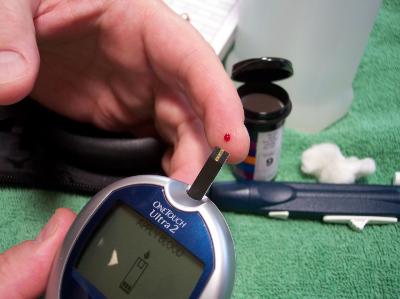Type 1 diabetes (T1D) is a disease in which your immune system attacks and destroys your insulin-producing cells. There is a known genetic risk factor in developing T1D, but there are also significant non-genetic components to getting the disease. Previous research in mice has established the microbiome's connection with the development of diabetes, but the link in humans has not been studied as closely. Researchers from various institutions in the U.S. and Finland recently assembled a cohort of infants genetically at-risk for diabetes, and tracked the changes in their microbiomes. They discovered that the microbiomes of those individuals that were eventually diagnosed with diabetes underwent characteristic shifts leading up to diagnosis, and that these changes were not observed in healthy infants. They published the results of their study in Cell Host and Microbe.
The researchers sampled the stools of 33 infants in Finland and Estonia that were genetically at-risk for diabetes. Their first major discovery was that even though the bacterial composition of the microbiome grew, changed, and became more diverse with age, the types and number of genetic pathways that were expressed by the microbiome, as well as the metabolites produced by the microbiome remained stable. They also found many similar bacterial species between infants, however these infants usually had different strains of said bacterial species. In most of these cases, once a particular strain established itself in the gut it remained stable and would not be displaced.
The scientists tracked the microbiome changes that occurred with diet as well. During breast feeding Bifidobacterium and lactobacillus predominated, and Lachnospiraceae decreased. After cessation of breast feeding the addition of eggs barley and soy seemed to have a direct influence on the microbiome. One of the biggest factors in the developing microbiome was actually geography, as the Estonian infants had significantly higher levels of Bacteroides and Streptococcus species.
The researchers then compared the microbiome samples between those infants that were eventually diagnosed with diabetes and those that were not. They discovered that a few bacterial species were much more abundant in those infants that got diabetes: Blautia, the Rikenellaceae, and the Ruminococcus and Streptococcus genera, including Ruminococcus gnavus and Streptococcus infantarius. Interestingly, each of these bacteria are ‘pathobionts’, or bacteria which exist in many healthy peoples’ microbiomes but have the potential to become pathogenic. Also, certain bacteria such as Coprococcus eutactus and Dialister invisus were non-existent in the diabetics' guts. In addition, the researchers discovered that the expression of specific genes, like those associated with sugar transport and the biosynthesis of amino acids, underwent shifts prior to the onset of diabetes. Finally, many of these bacteria that were associated with T1D appeared right before the onset of the disease, and these bacteria were linked to the presence and absence of certain metabolites in the stool.
These results provide exhaustive evidence for an association between the microbiome and diabetes. It links specific bacteria in the microbiome and the expression of certain genes by the microbiome to the disease. The next step is to study the mechanisms by which the microbiome induces diabetes, and then therapeutics can be developed.

